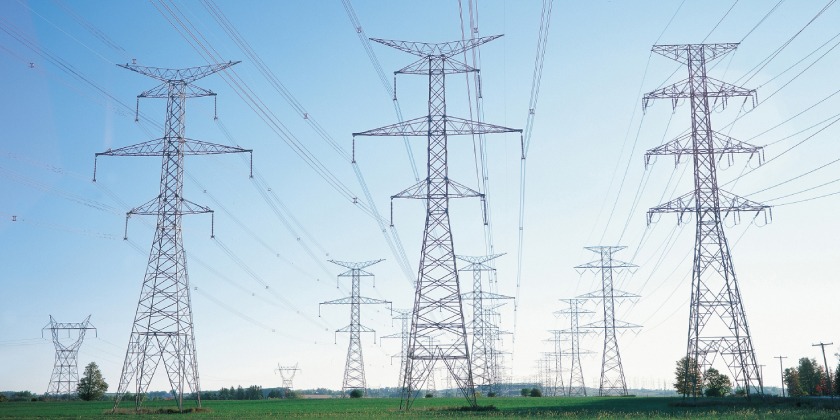Federal Measures Helping Build Saskatchewan’s 21st Century Electricity Grid

December 9, 2024
The federal government has announced a suite of over $265 million job-creating measures for SaskPower and Saskatchewan clean electricity projects to address shared priorities and build a clean future.
In the 21st century, a reliable and affordable clean electricity grid is the backbone of a strong economy. Today, more than 80% of Canada’s electricity is generated from clean sources like hydropower, wind, solar, and nuclear—and it’s a big part of the reason why companies are choosing to invest in Canadian workers and business. In Saskatchewan, companies like Jansen, which mines potash, are cleaning their operations and meeting global potash demand. By taking action to expand clean power, new economic opportunities are being unlocked while workers and families can get ahead with lower energy bills. As we build more power to meet our growing energy needs, lower power rates are front and centre.
Investing to build more renewable power
The Government of Canada’s Smart Renewables and Electrification Pathways Program (SREPs) is delivering over $12 million in job-creating federal investments for local and Indigenous-led renewable power projects, including:
- Over $2.7 million for the 1.4-megawatt Cosette Solar Project in Estevan, owned in part by White Bear First Nations
- Nearly $2.7 million for the one-megawatt NM Solar Project in Lomond No. 37, owned in part by White Bear First Nations
- $2 million for the 100-megawatt Prairie Coast Solar Project in Lajord
- Over $1.8 million for the one-megawatt Kiyam Solar Project near Gladmar, partly owned by Mistawasis Nêhiyawak First Nation
- Over $1.8 million for the one-megawatt Iskotew Solar Project near Alsask, partly owned by Mistawasis Nêhiyawak First Nation. Over $1.3 million for the 500-kilowatt (AC) La Plonge Solar Project with English River First Nation
Once fully completed, these solar projects would provide electricity equivalent to powering nearly 20,000 homes every year—more than Saskatchewan’s third-largest city, Prince Albert. To date, this federal fund has delivered over $90 million in support for job-creating clean power projects across Saskatchewan, primarily with Indigenous partners. These projects will enable local economic growth and deliver clean, affordable energy to communities while advancing economic reconciliation, and we will continue to work with the people of Saskatchewan to ensure future power demand is met with clean, affordable, and reliable energy.
Modernizing and upgrading Saskatchewan’s grid
The Government of Canada’s Future Electricity Fund is transferring over $256.7 million to SaskPower for a range of job-creating, clean power projects, which will grow and modernize the provincial energy grid while getting costs down for ratepayers and driving reliability. Through the fund, Indigenous clean energy projects will receive $42 million. This includes:
- Nearly $70 million for over 6,000 km of critical rural power line reliability upgrades, including replacement of aging installations and system upgrades.
- Over $55 million for a 60 megawatt/60-megawatt hours battery storage system and associated technologies to help manage peak demand and integrate renewables.
- Nearly $80 million for a new substation and two 240-kilowatt transmission lines connecting the province to the Southwest Power Pool in the United States, facilitating 500 megawatts of additional transmission service.
- Over $9 million to support consumer and household energy efficiency programs, including SaskPower’s new Energy Efficiency Discount Program that helps pay for ENERGY STAR appliances, home insulation, and other cost-saving measures for families.
- Over $20 million to help retrofit Northern First Nations’ homes and help new buildings achieve higher cost-saving energy efficiency performance standards.
- Over $5 million to develop power generation in remote and northern communities, while replacing aging distribution infrastructure.
- Nearly $14 million to add 400 megawatts of wind power and 300 megawatts of solar generation in south-central Saskatchewan by 2027. So far, a portion of this funding has been allocated to support the implementation of a 200-megawatt wind facility project partnership between Innagreen Investments and Awasis Nehiyawewini Energy Development Limited and a 100-megawatt solar project partnership between Iyuhána Solar LP and Ocean Man First Nation.
- And additional investments to train more Indigenous power line technicians alongside the Saskatchewan Indian Institute of Technologies.
As demand for electricity grows, the opportunity to power our communities and the world with clean, affordable, and reliable power is a win-win-win—for workers, for affordability, and for the environment. The Government of Canada’s plan is working to drive greenhouse gas pollution down while the economy grows and inflation cools. Together, with provinces and territories, Indigenous peoples, municipalities, industry, and workers, the Government of Canada is seizing the opportunity ahead to build a strong economy with good-paying sustainable jobs, low energy bills, and to ensure a healthy environment for our children and grandchildren.
Quick facts
- In addition to these measures, Minister Wilkinson announced the furthering of the Government of Canada’s permitting of small modular reactors (SMRs) in Saskatchewan first announced earlier this year, and underlined the good progress achieved to date by Canada and Saskatchewan in renewing the equivalency agreement on phasing out coal-fired electricity in the province.
- Saskatchewan has some of the highest wind, solar, and geothermal potential in Canada, in addition to having the conditions for an end-to-end nuclear fuel supply chain. The Government of Canada is working to help provincial partners unlock barriers to achieving their own energy plans while Powering Canada’s Future.
- The Government of Canada has delivered a historic suite of over $75 million in previously announced investments in Indigenous-led clean power projects in Saskatchewan, including with the Ochapowace Nation, Lac La Ronge Indian Band, Star Blanket Cree Nation, Cowessess First Nation, the nine First Nations of the Meadow Lake Tribal Council, and the First Nations Power Authority of Saskatchewan.
- Independent experts from Clean Energy Canada forecast that there will be over 130,000 clean energy jobs added in Saskatchewan between 2025 and 2050.
- Findings from the Canadian Climate Institute demonstrate that a model of the federal Clean Electricity Regulations for a clean, reliable, and affordable grid is achievable in Saskatchewan, and in fact, provides a lower-cost pathway than SaskPower’s 2050 net-zero plans when accounting for signaled federal investment. These findings by Dr. Brett Dolter were reviewed by Tim Eckel and John Wright, Former President and Chief Executive Officer of SaskPower.
- Powering Canada’s Future combines historic investments and balanced, fair regulations to ensure new electricity production in Canada is built with the affordable, reliable, clean, and renewable energy sources that Canadians expect.
- Across Canada, electricity operators are taking advantage of the more than $60 billion over the next decade in federal support to help build 21st century electricity grids.
- All G7 countries have committed to build a net-zero grid as a foundational measure for enabling achievement of net zero economies by 2050.
- Electrification is helping to save families money on their energy bills, such as by driving hybrid trucks or installing all-season heat-pumps that have lower operating costs. These cost-saving technologies are supported by purchase incentives and rebates programs from the Government of Canada, helping to put hundreds of dollars more in the pockets of Canadian families every month.
- Besides significant cost savings, several studies have found that clean electricity can enable lower and more stable electricity bills, since the shift away from fossil fuel electricity also protects ratepayers from volatile electricity prices caused by global price shocks associated with coal and natural gas-powered electricity. For example, Manitoba, Quebec, British Columbia, and Ontario largely operate cleaner electricity grids that provide stable and affordable power and energy reliability during the coldest winter days.
- The Future Electricity Fund is comprised of proceeds collected from electricity-generating facilities covered by Canada’s Output-Based Pricing System, which is the regulatory trading system for industry under Canada’s carbon pollution pricing system. The federal Output-Based Pricing System is designed to ensure there is a price incentive for industrial emitters to reduce their greenhouse gas emissions and spur innovation.
Related
Associated links
- Federal Support for Small Modular Reactor (SMR) Development in Saskatchewan
- Canada Sparks Progress on Clean Electricity With Federal Funding in Saskatchewan
- The Road to Net-Zero Electricity in Saskatchewan – Canadian Climate Institute
- Canada’s Interim Sustainable Jobs Plan
- 2030 Emissions Reductions Plan








